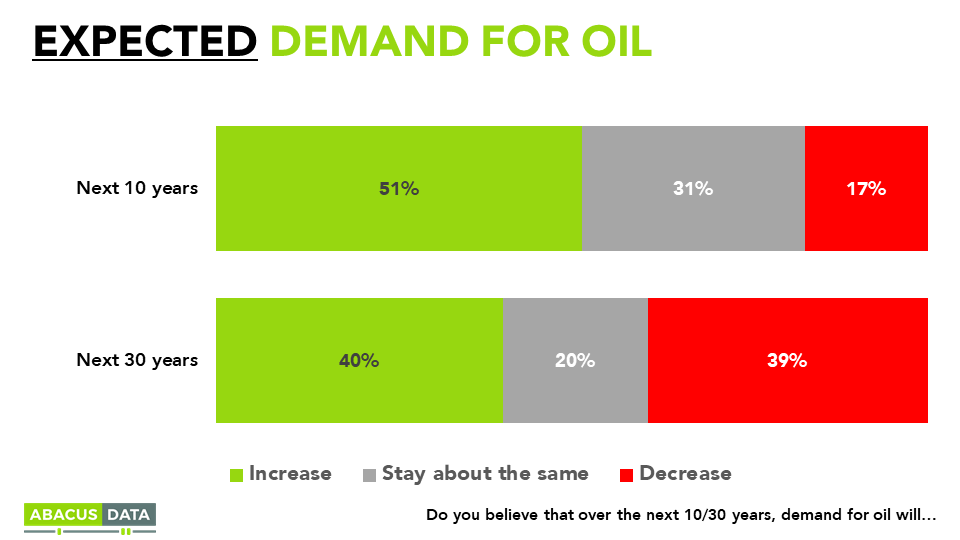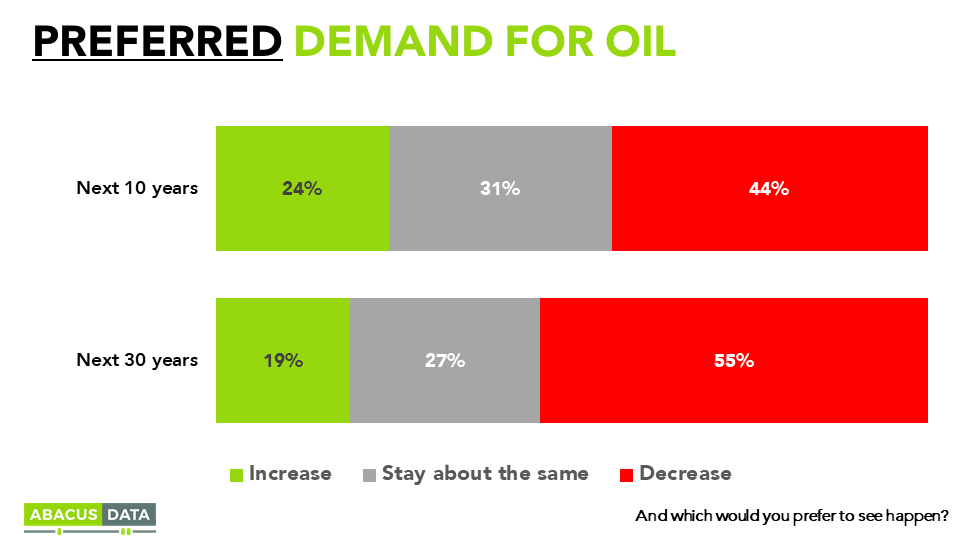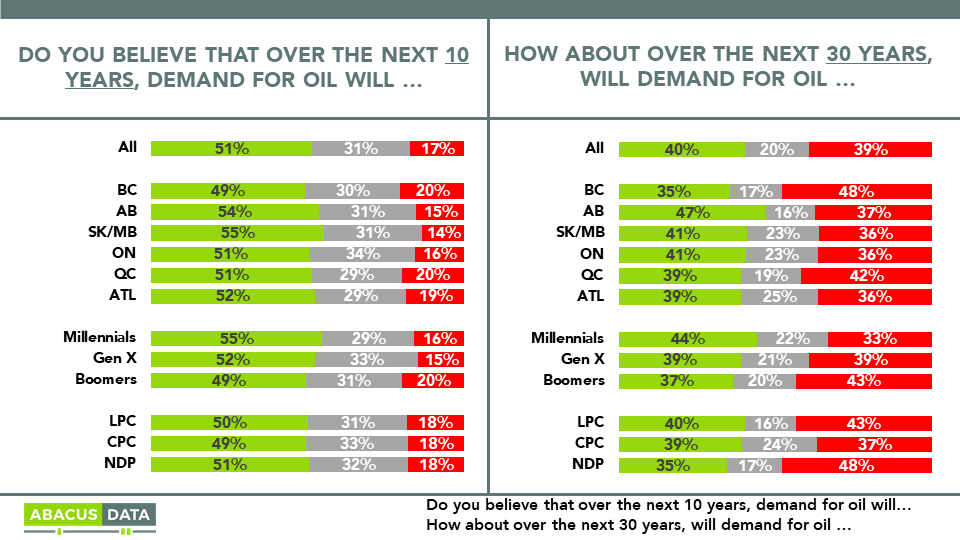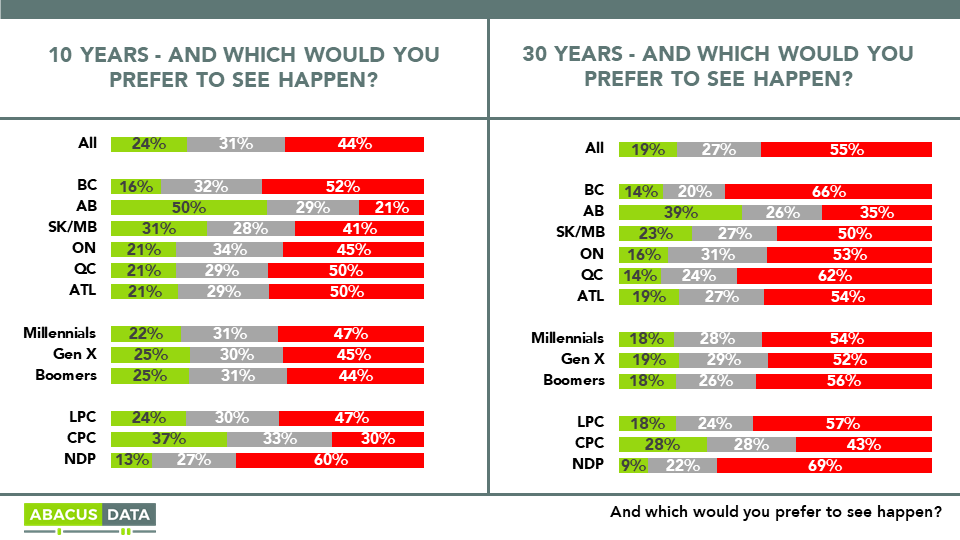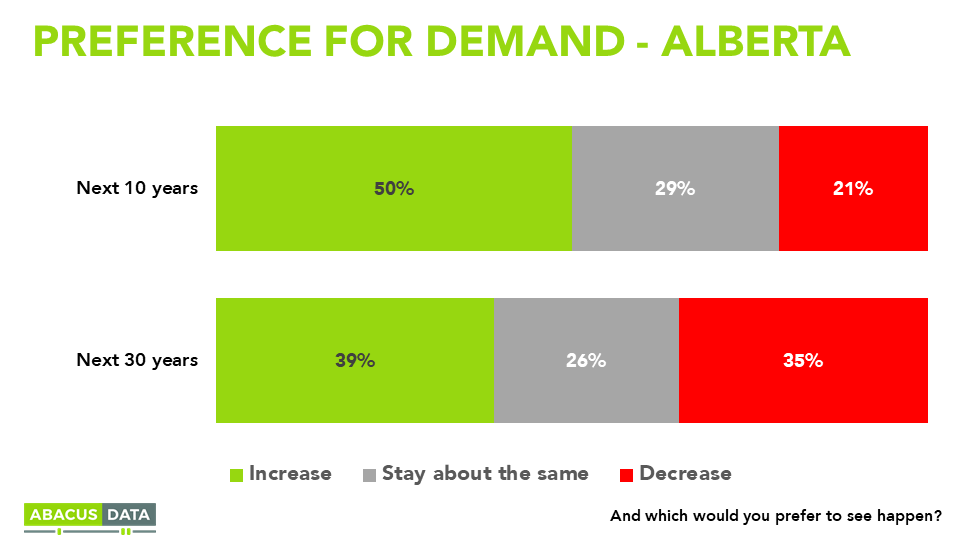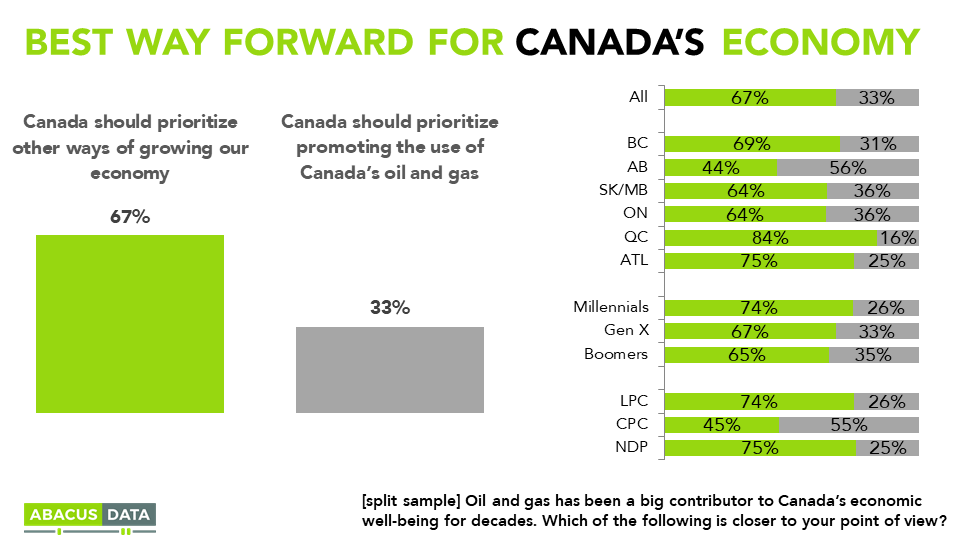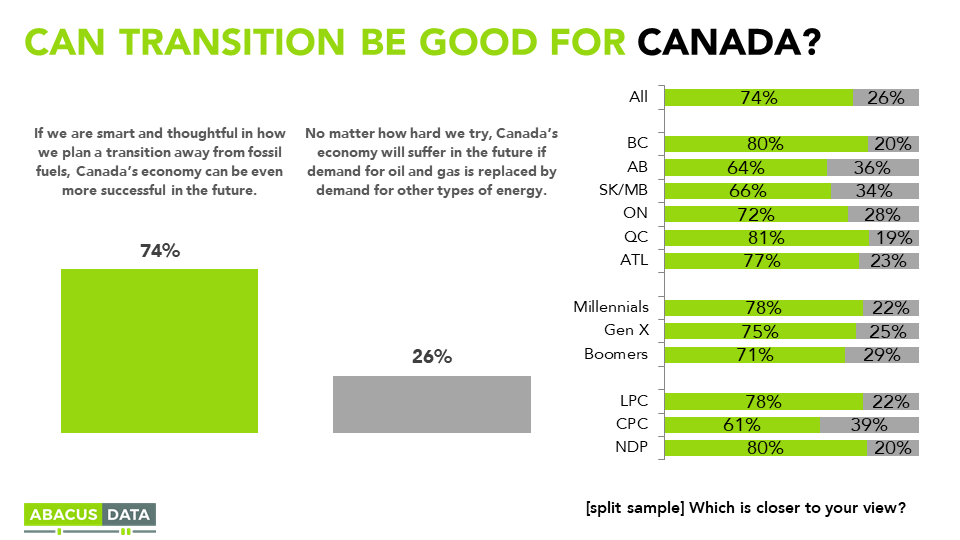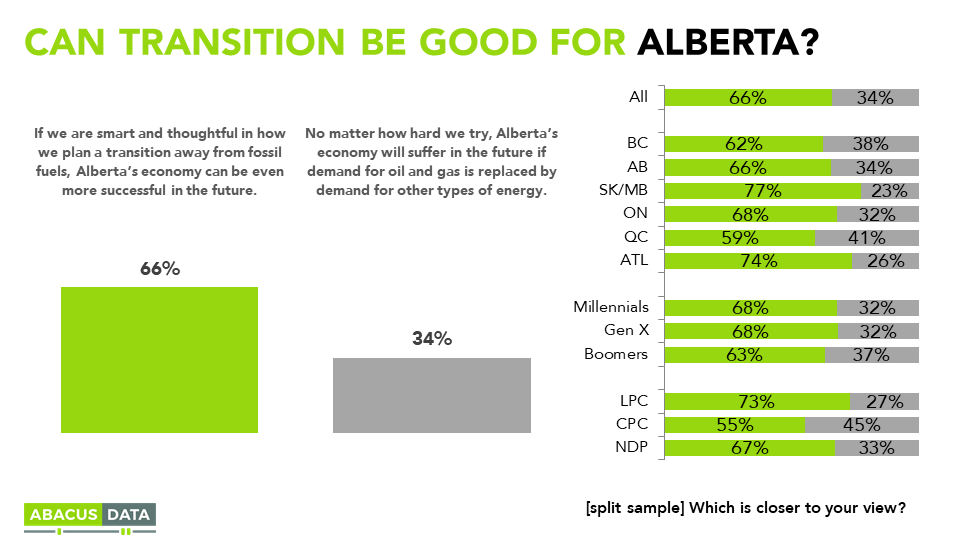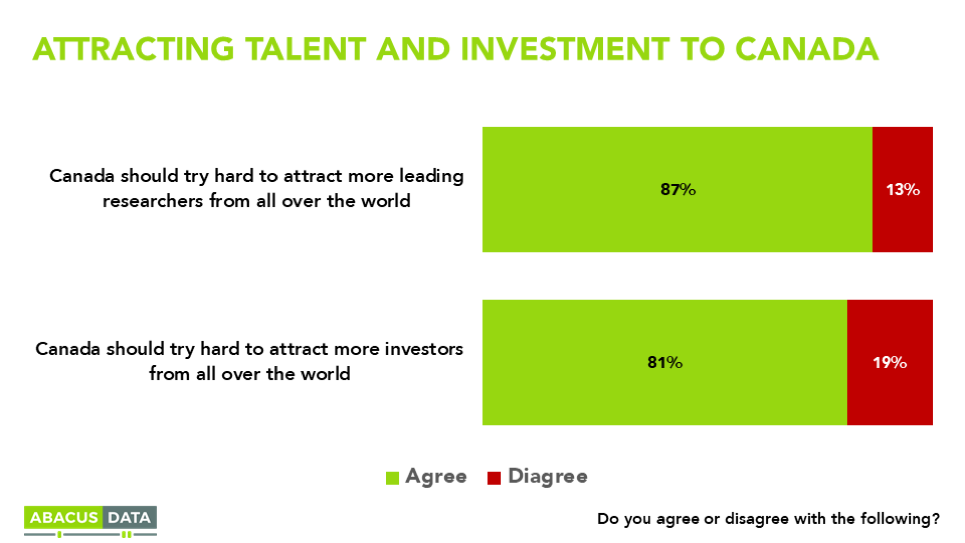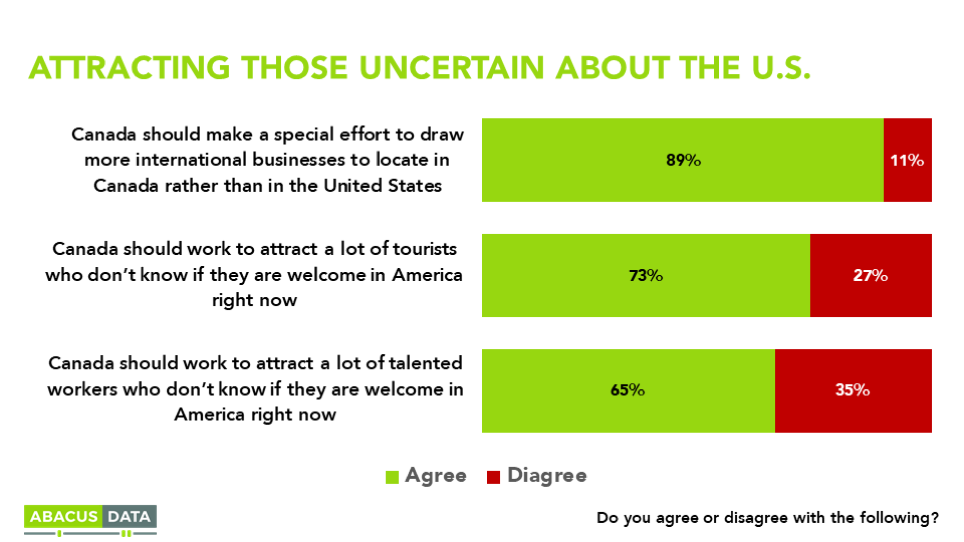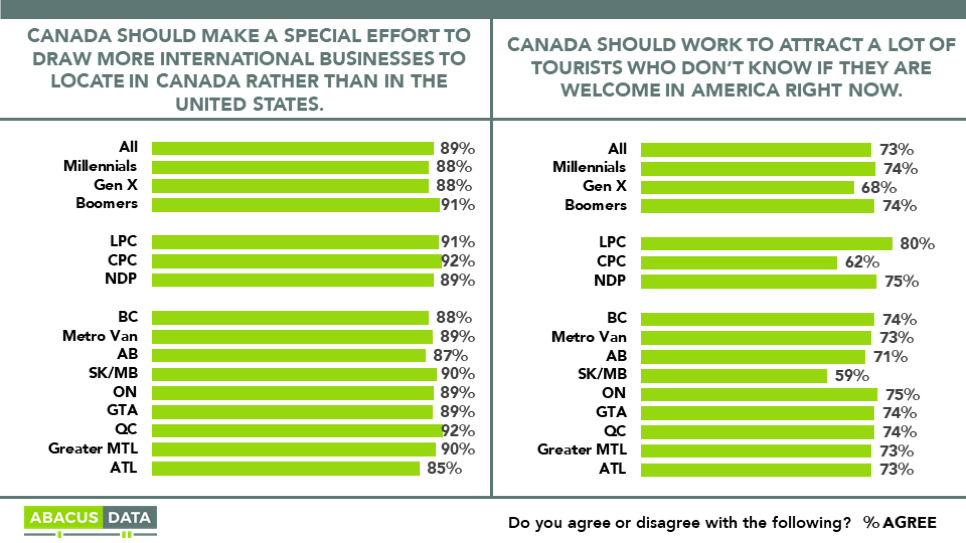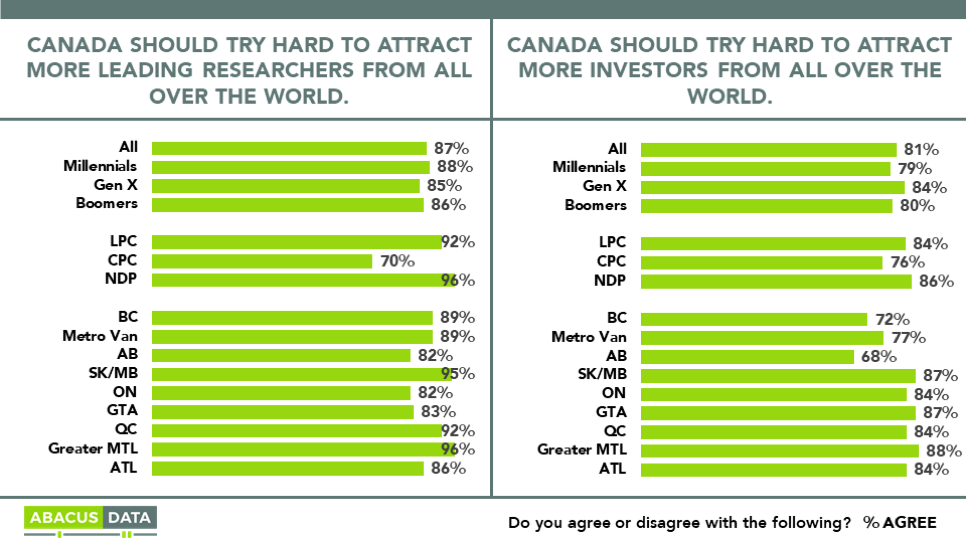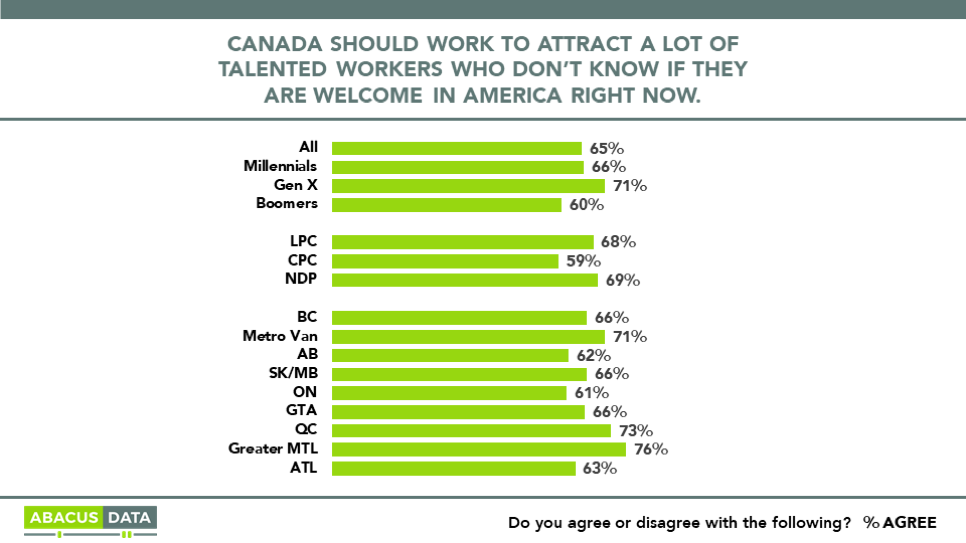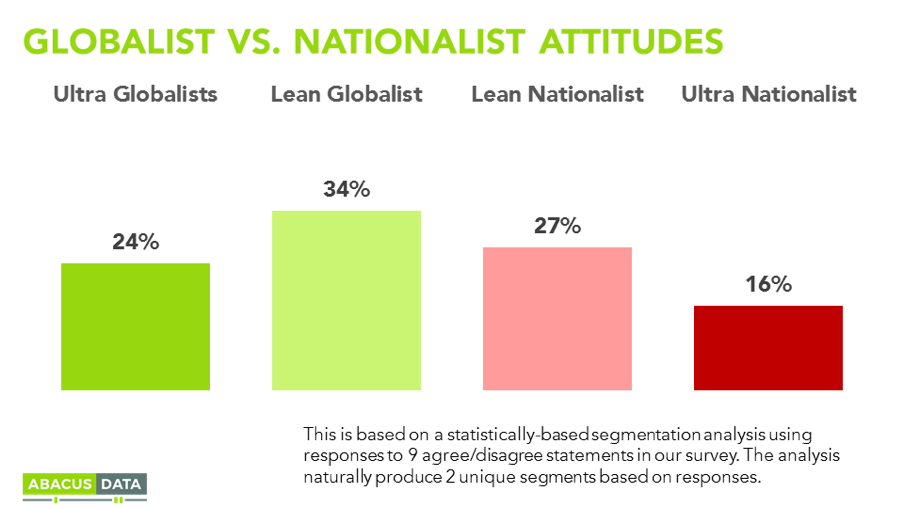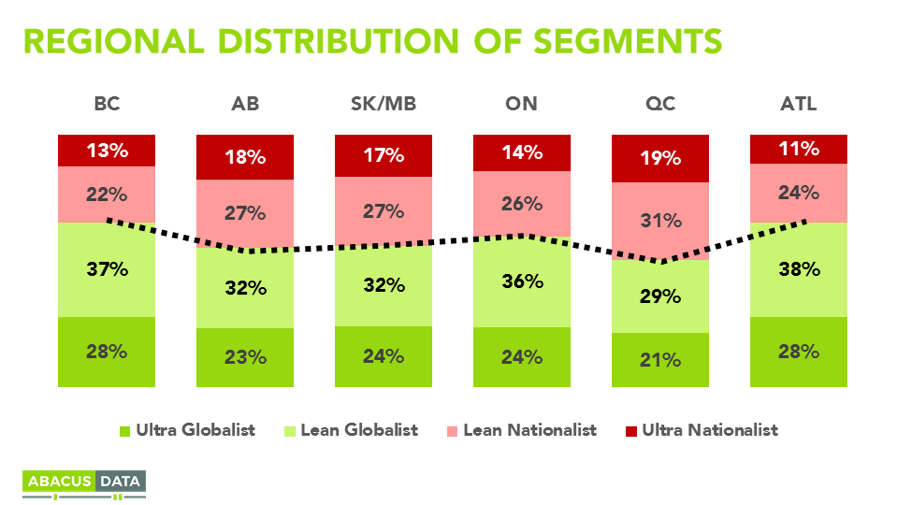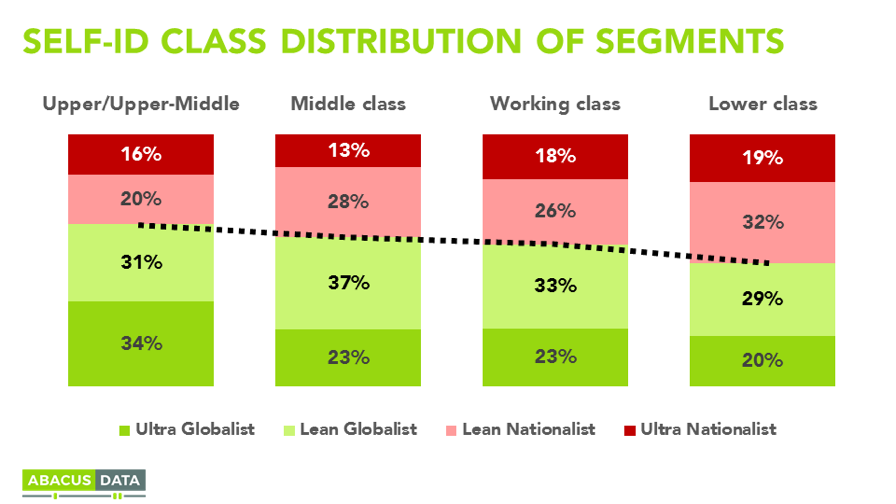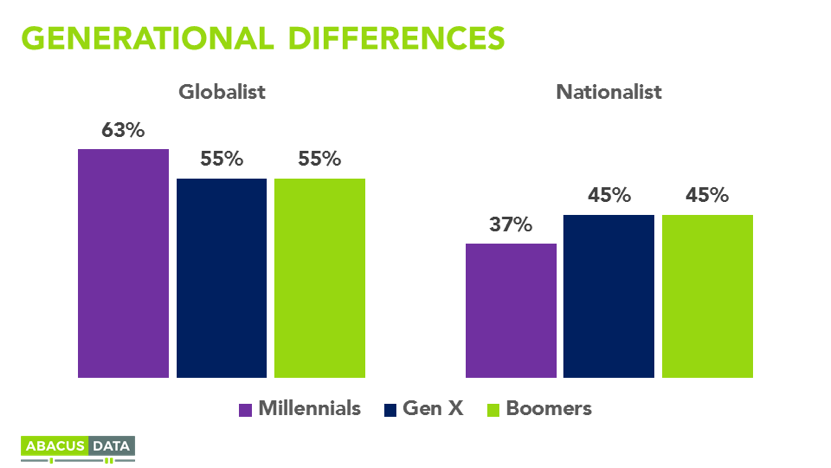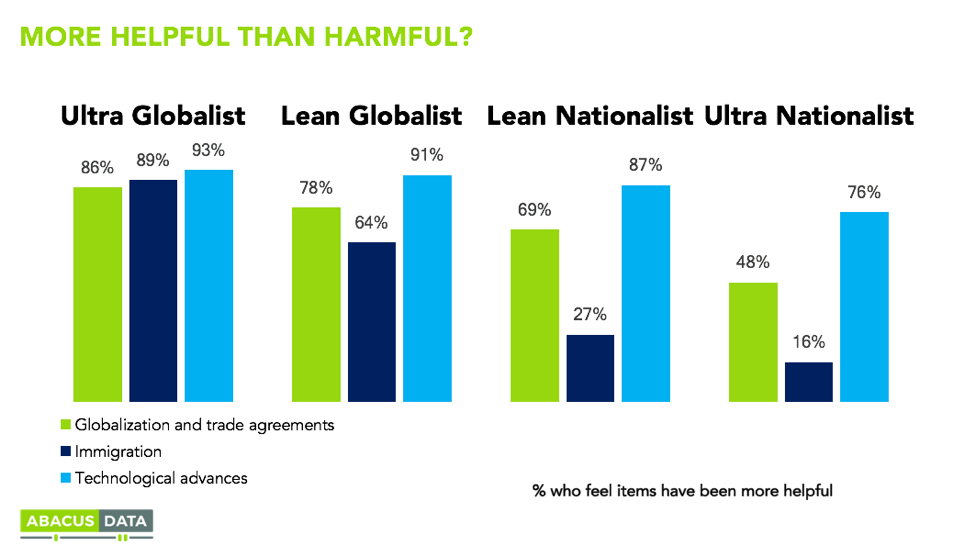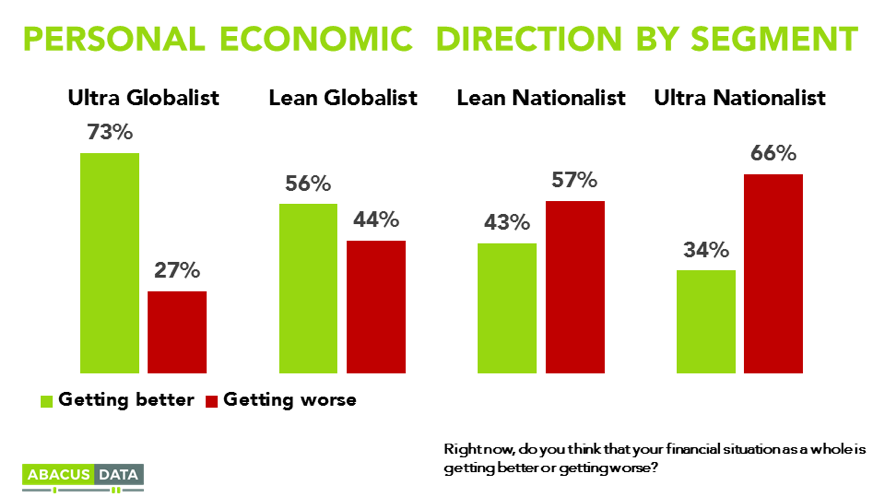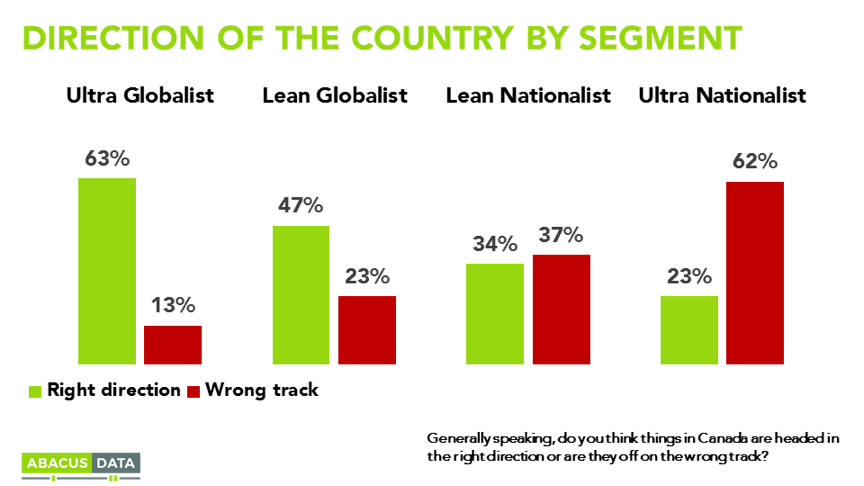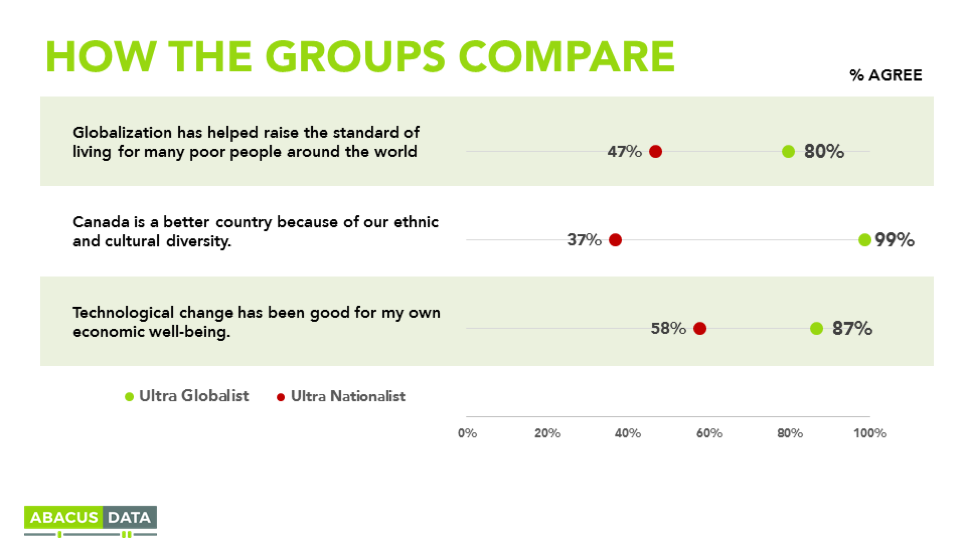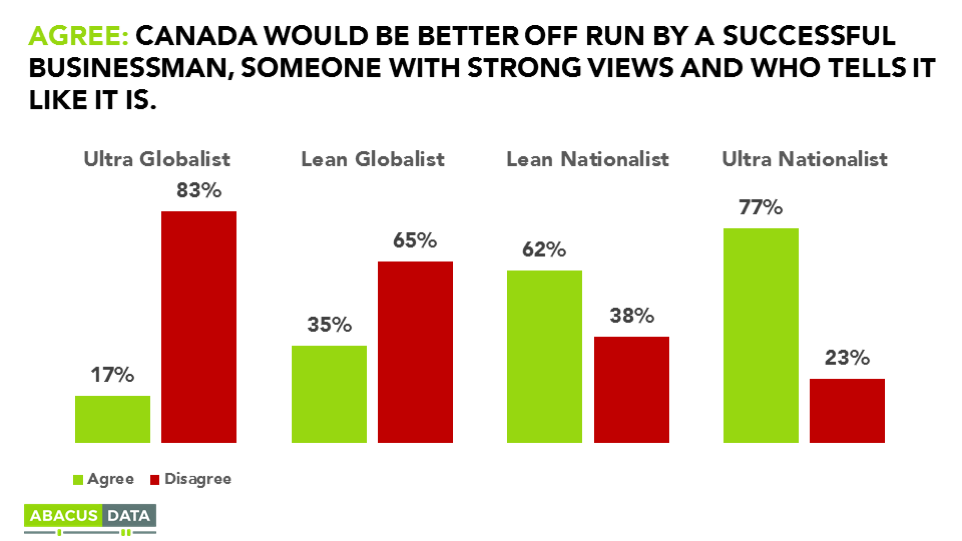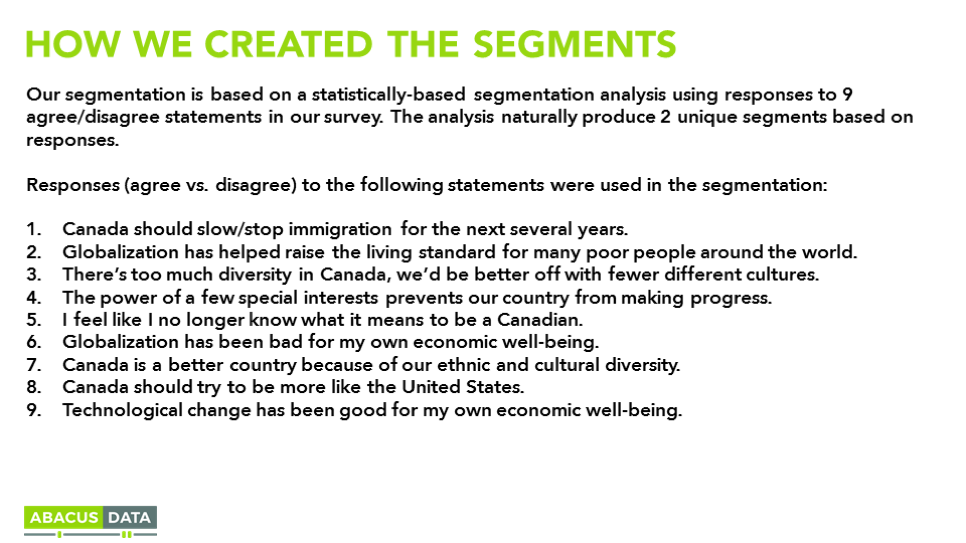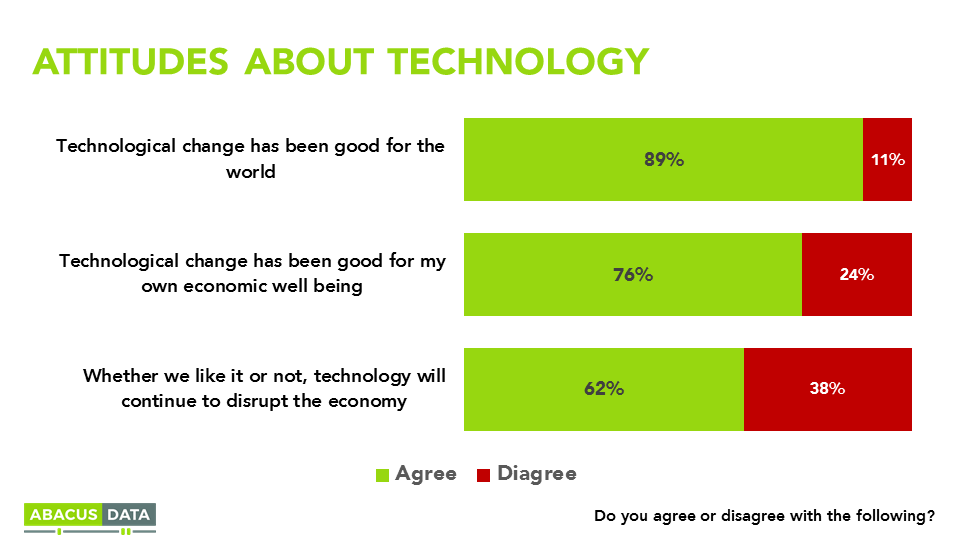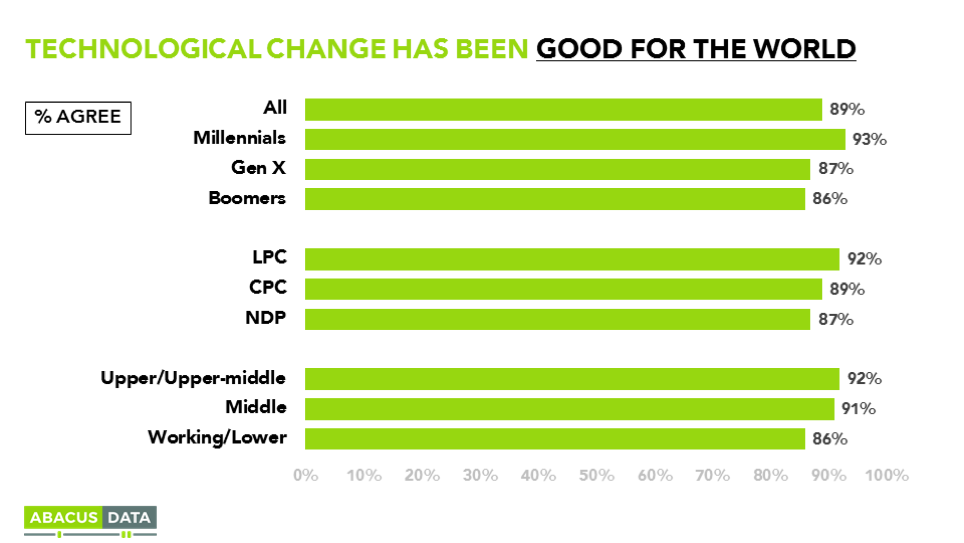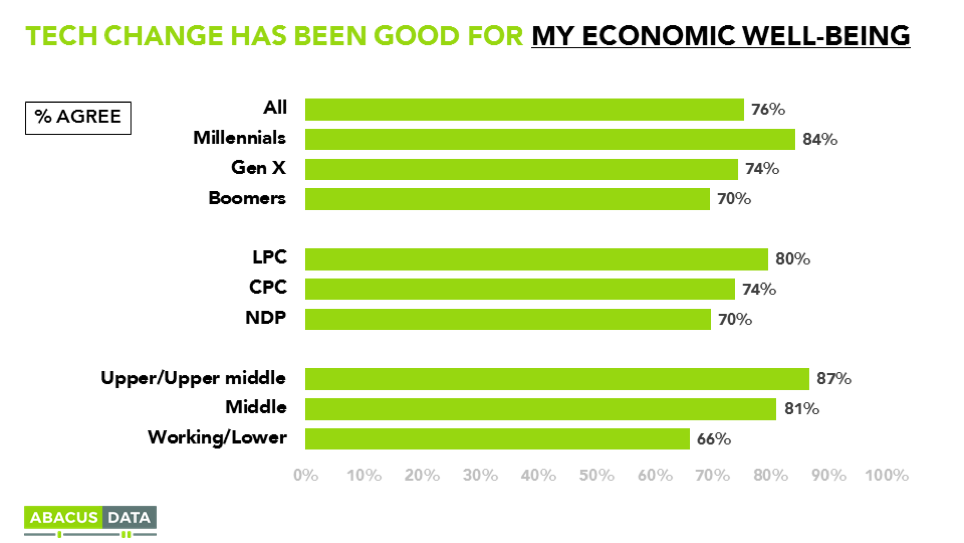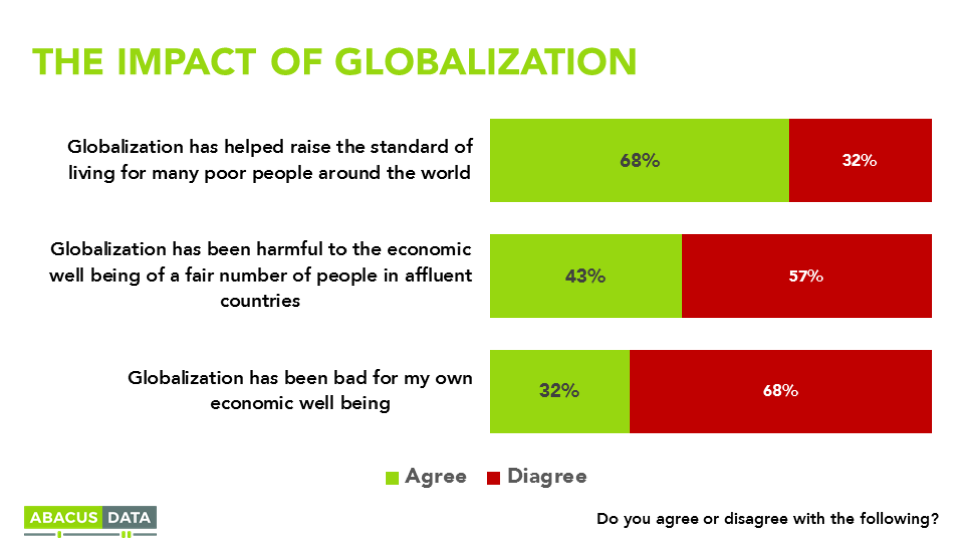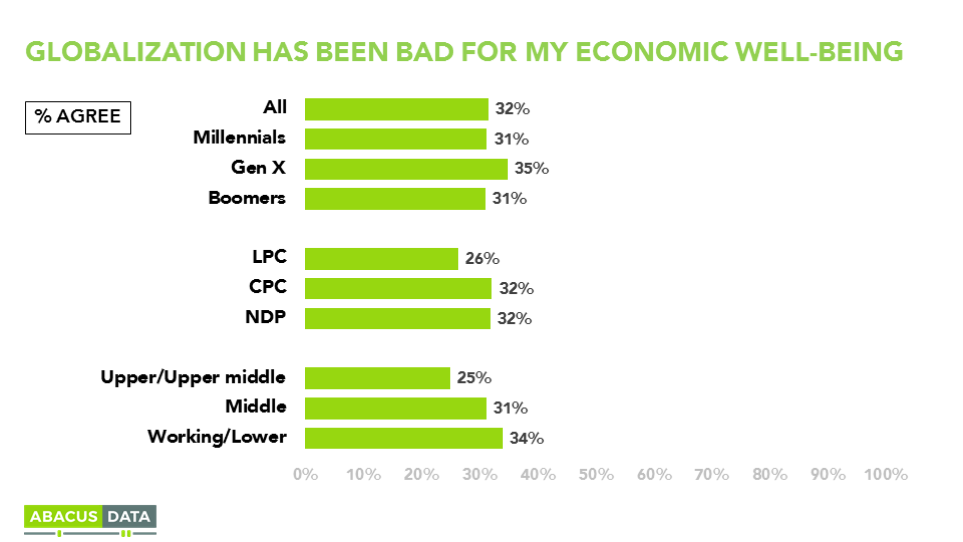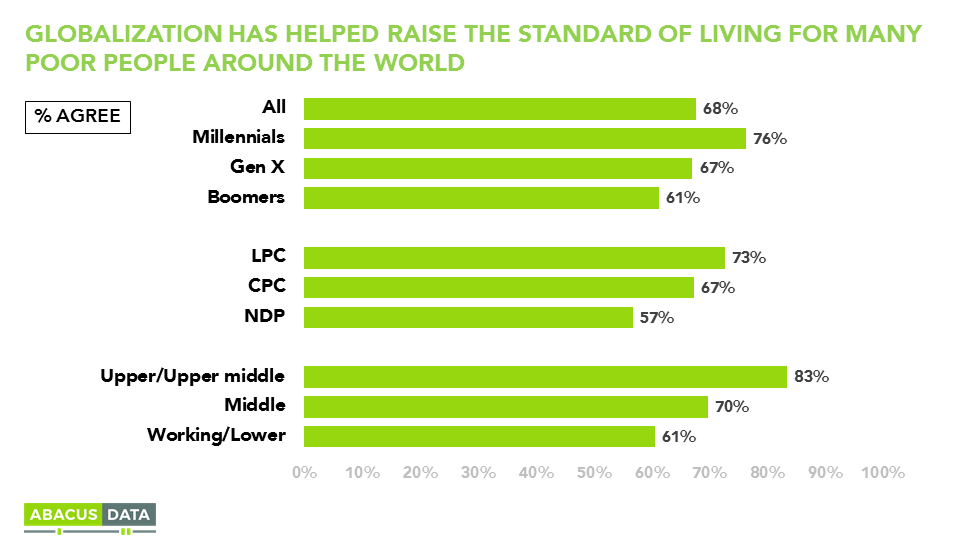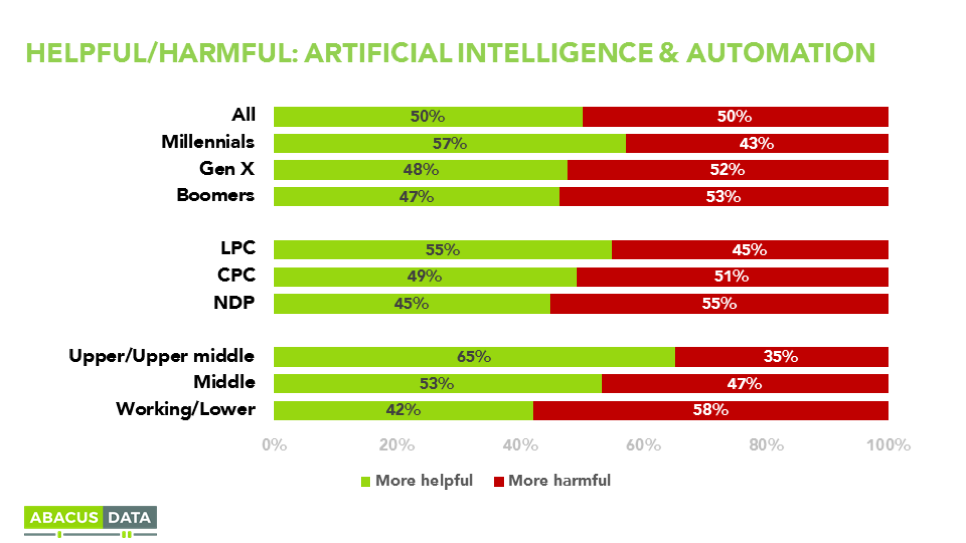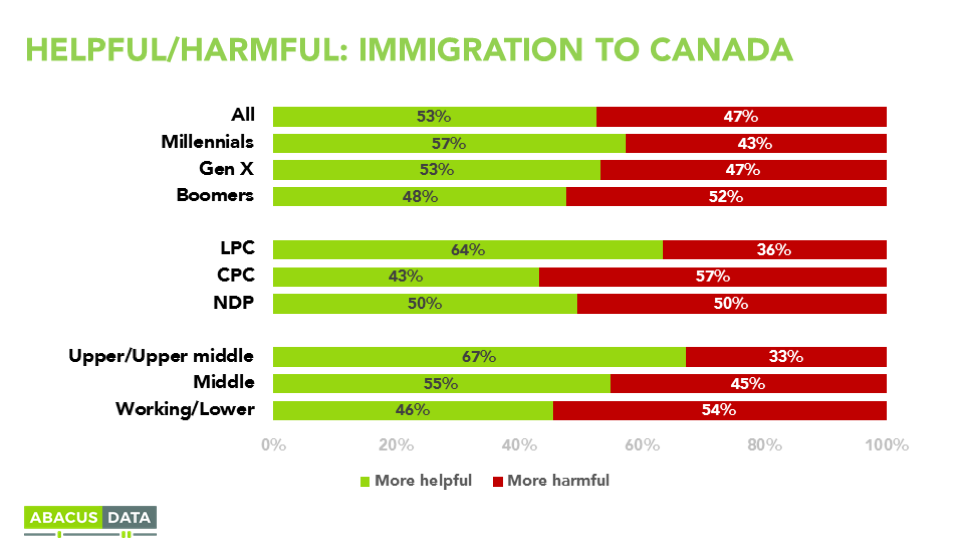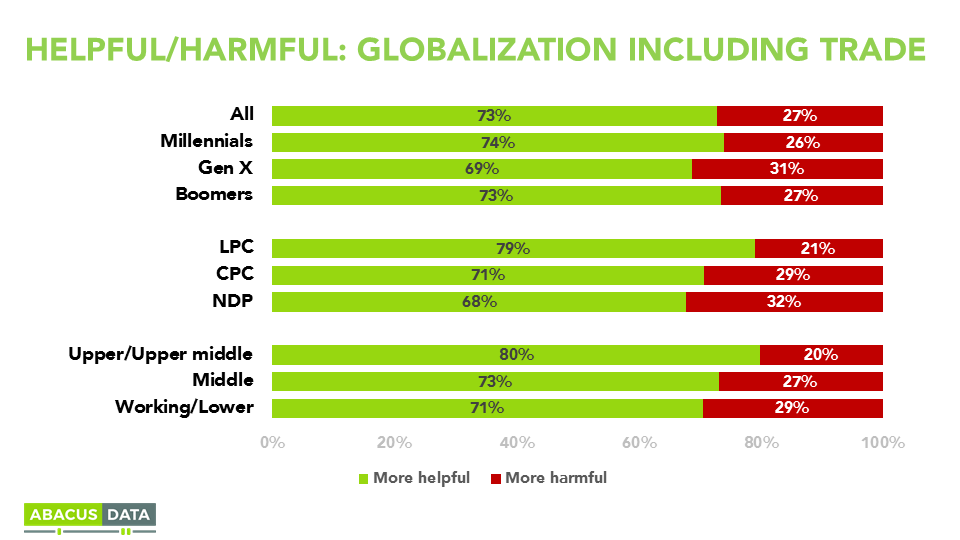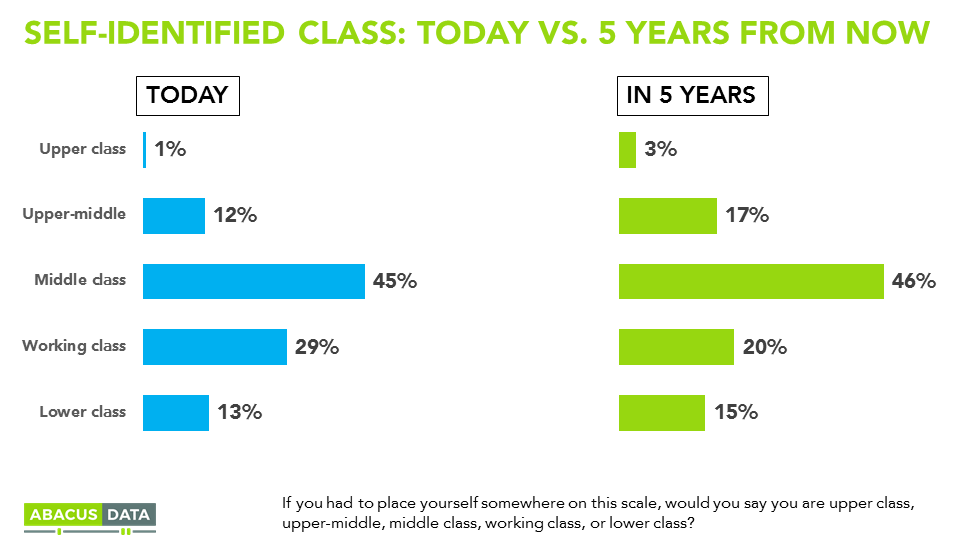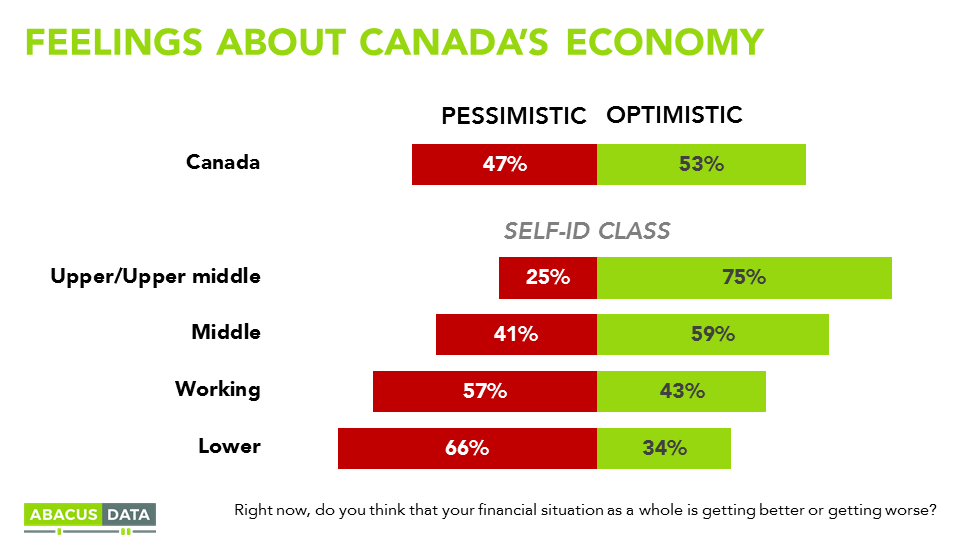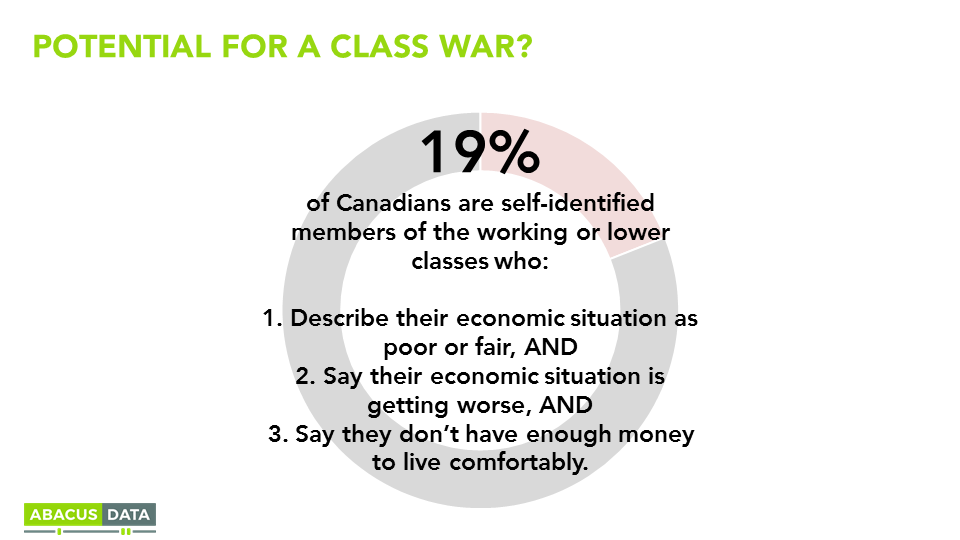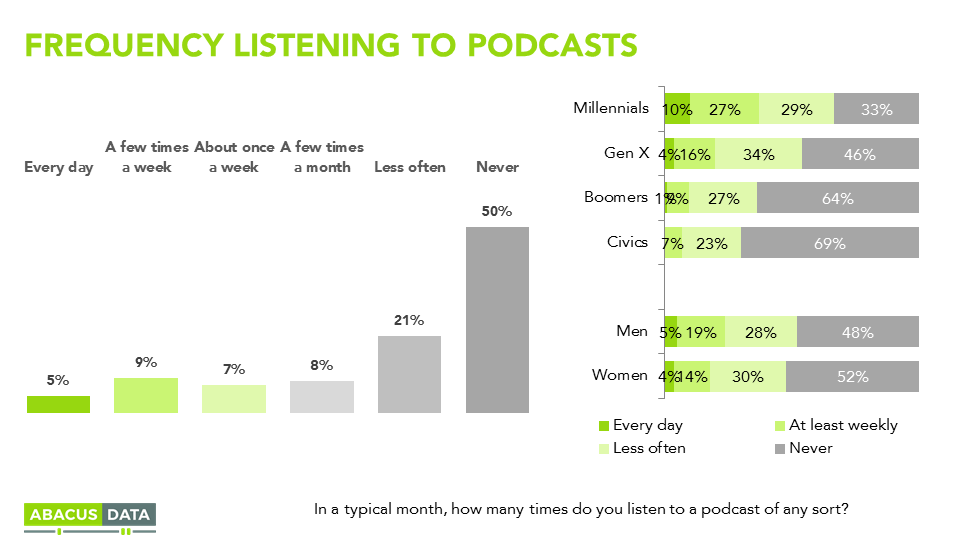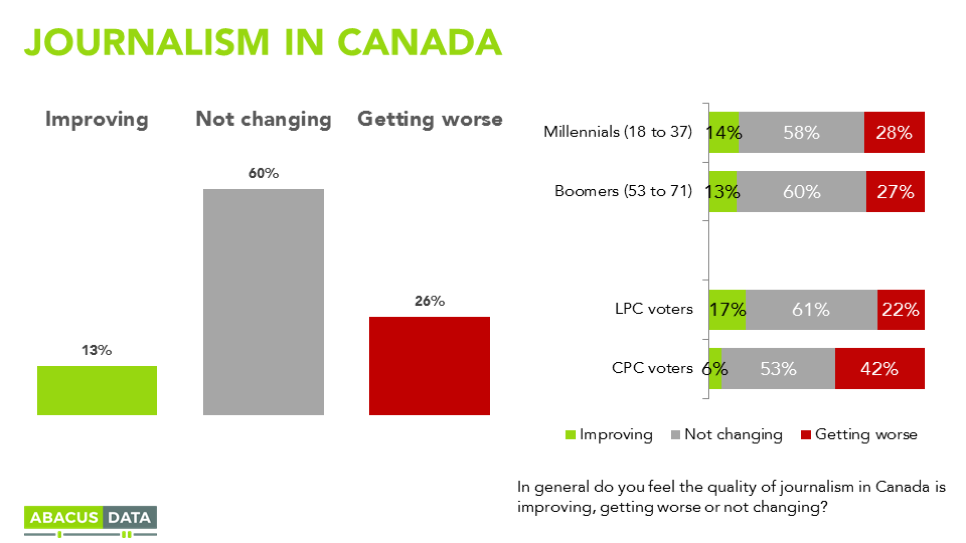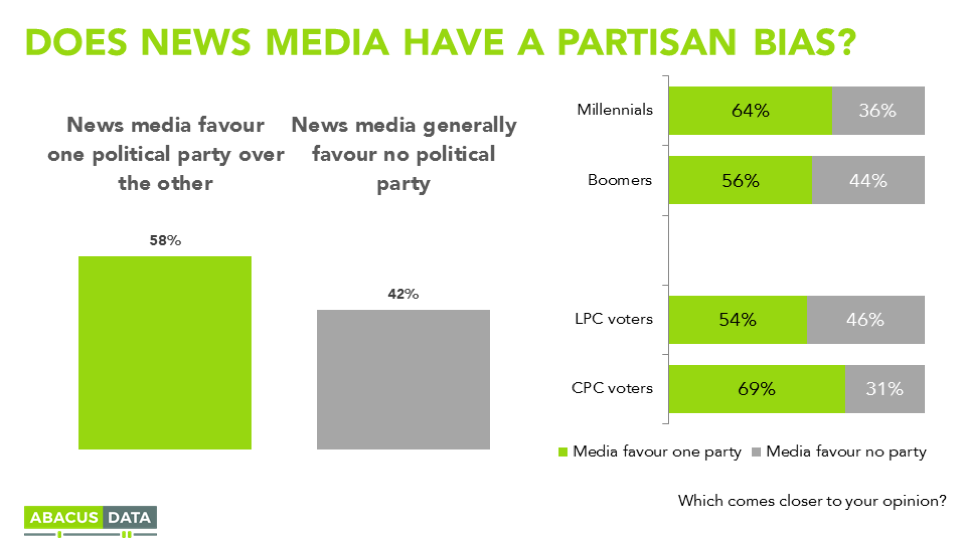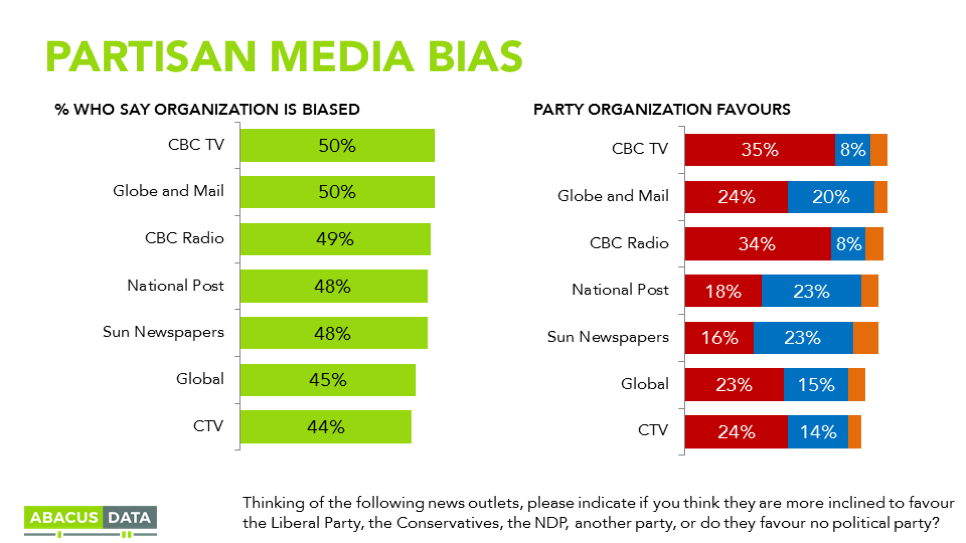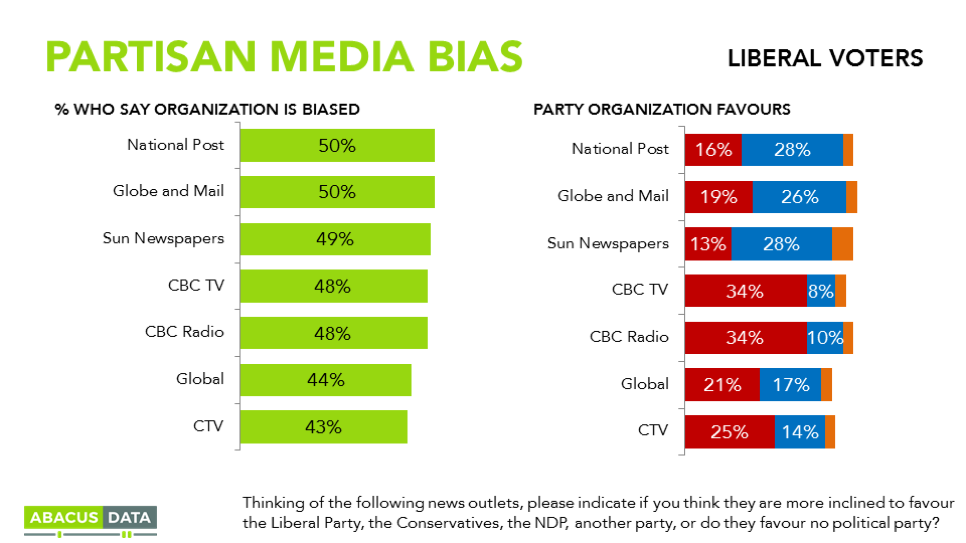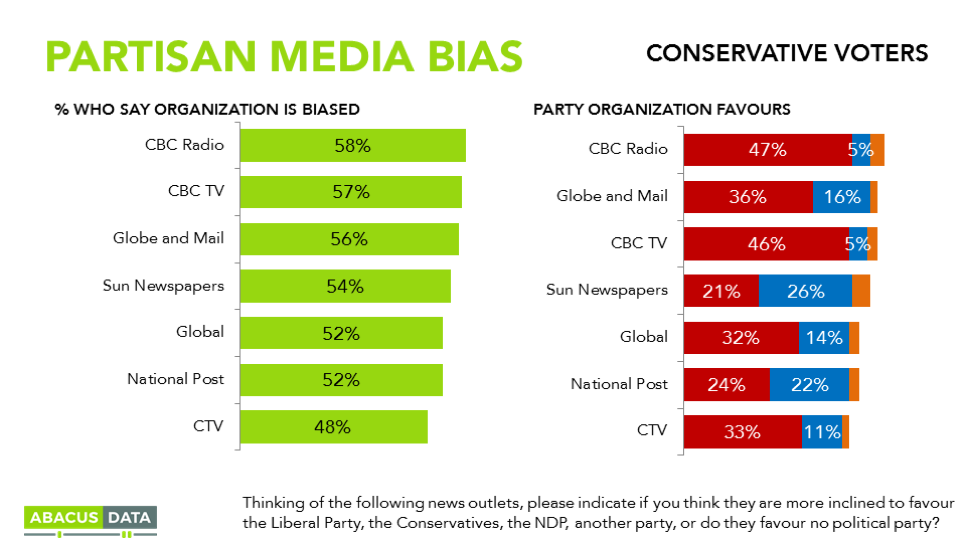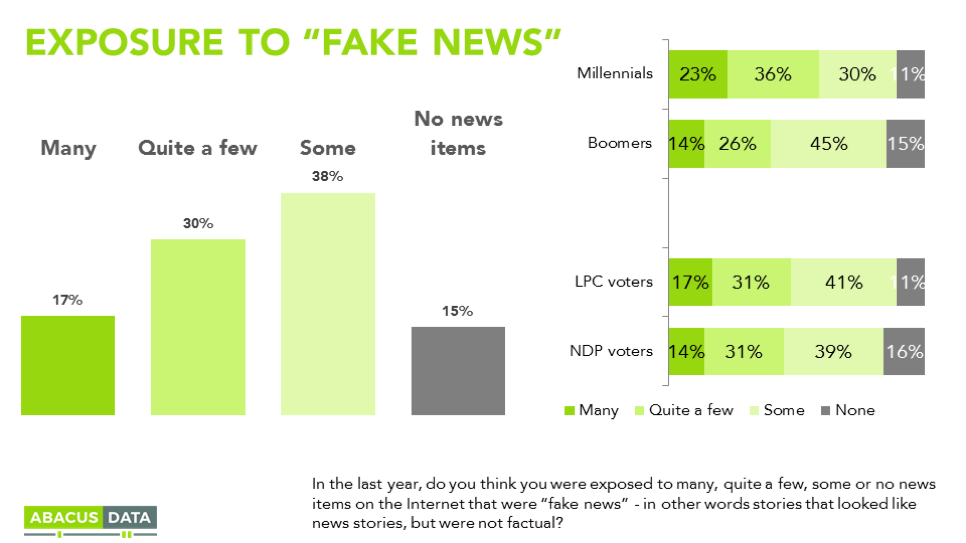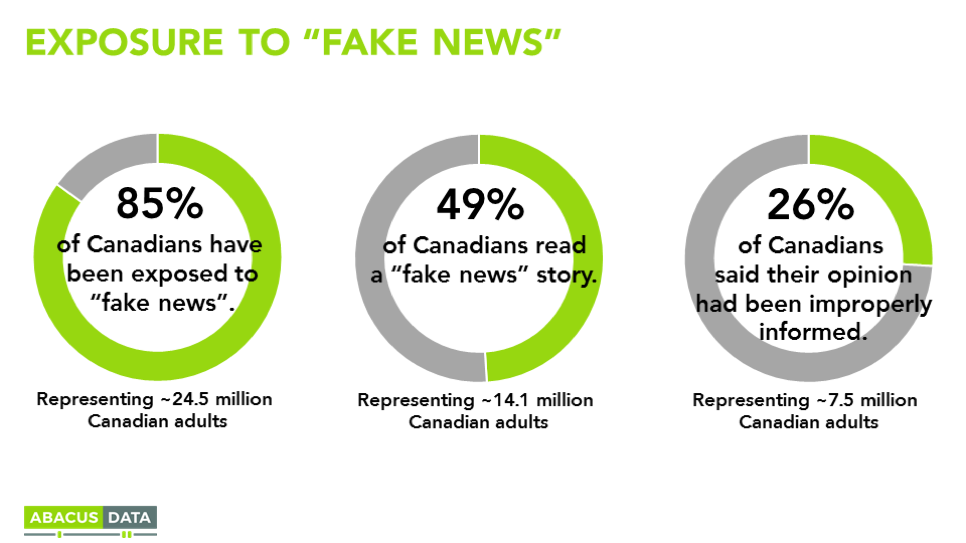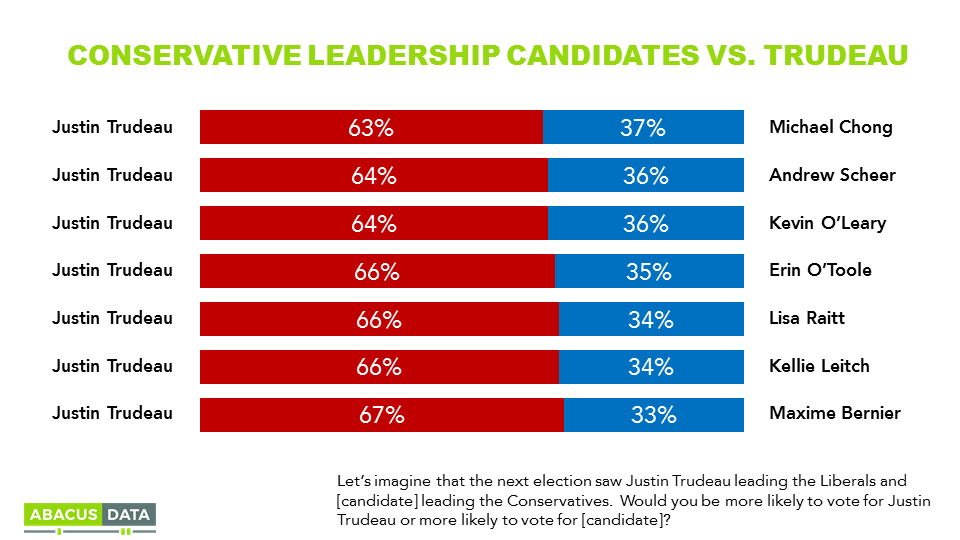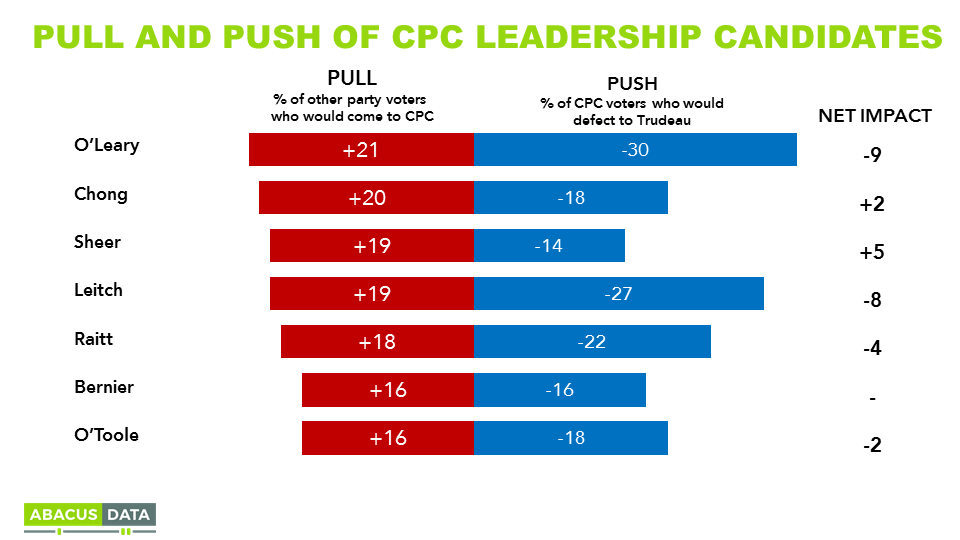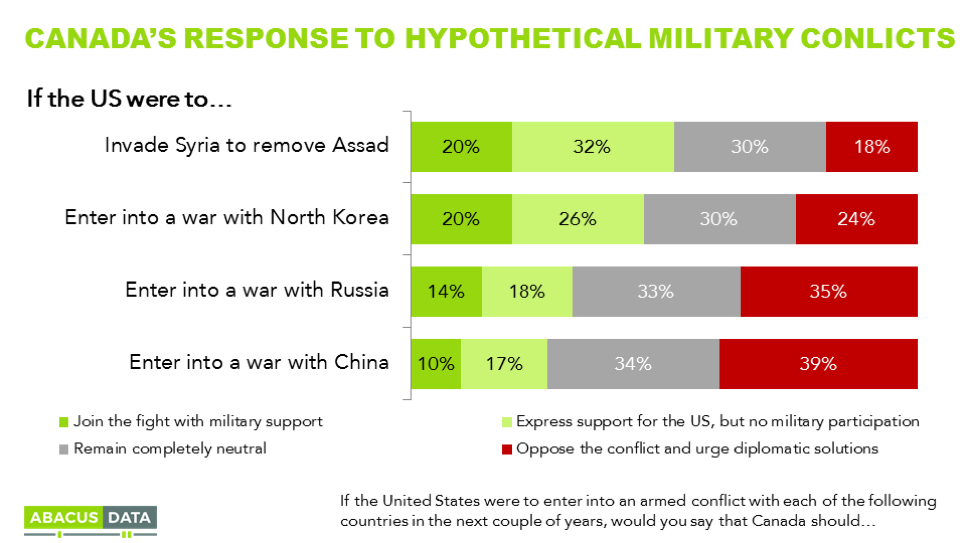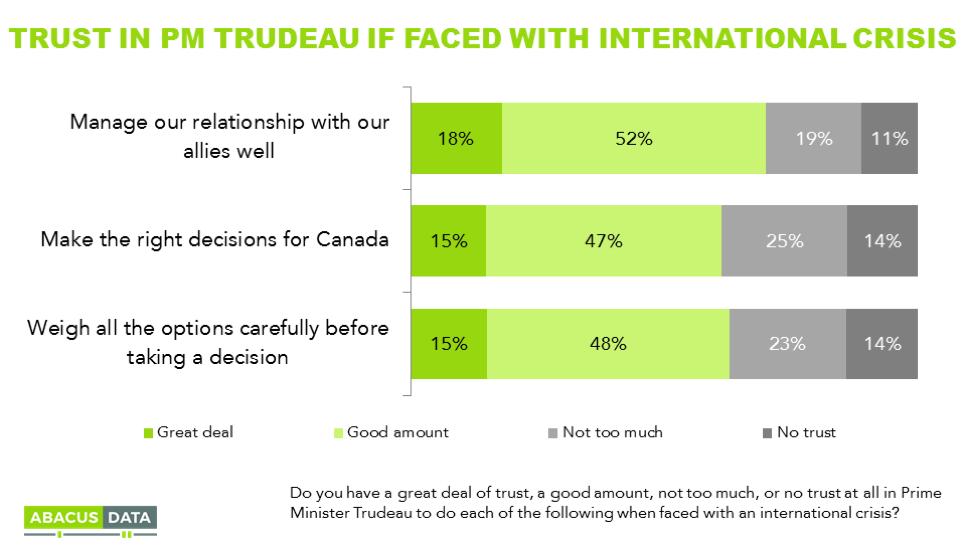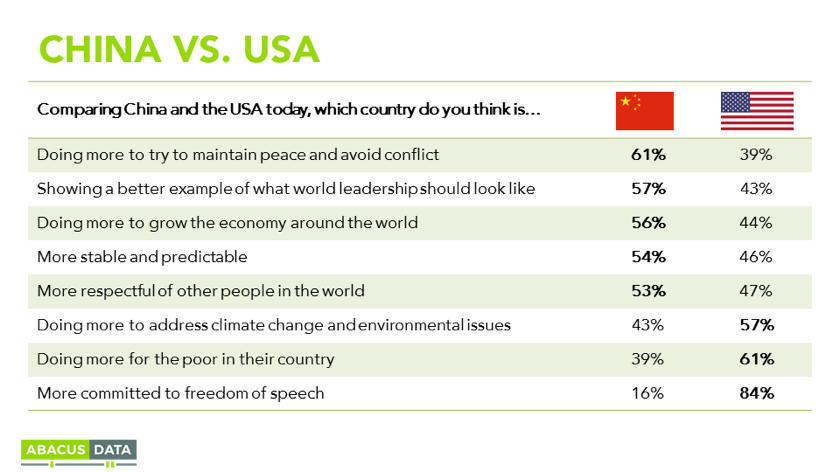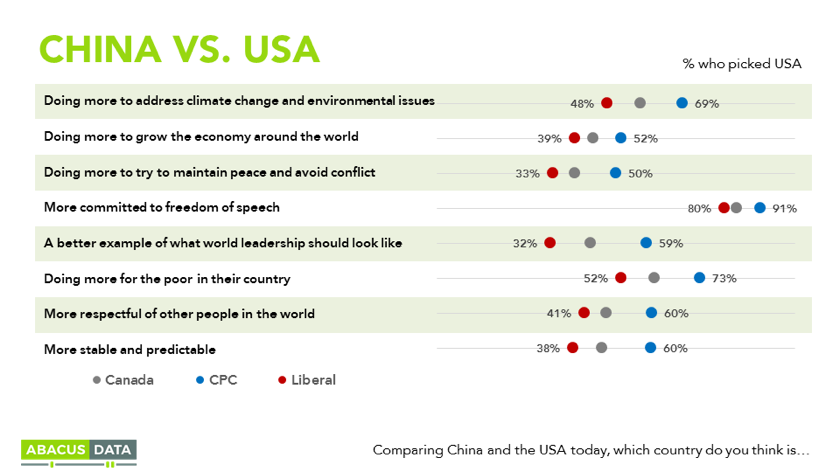As Conservatives Choose and the NDP Race Heats Up, Where Things Stand in Canadian Politics.
It’s been just over a year and a half since the last federal election. Conservatives across the country have been mailing in ballots and their new leader will be known next weekend. The NDP race may now have a final lineup set and switch into a higher gear.
As partisans of each party consider where they’ve been and what they need to accomplish, here’s what our latest trend analysis tells us about the circumstances of the two main opposition parties.
THE CONSERVATIVE PARTY OF CANADA
• Just under half of all voters say they would consider voting Conservative. Under the interim leadership of Rona Ambrose, that number is about what it was during most of the last year in which Stephen Harper was leader. The Conservative accessible voter pool hit a low just before the election at 40%, a level that made it very difficult if not impossible, to win.
The size of the pool has recovered slightly from that low, but the current pool of 46% means that the party is back to where it was in the final months of the Harper era prior to the 2015 Election. The Conservative voter pool is the same size as that of the NDP, and 13 points smaller than that of the Liberal Party.
Regionally, the Conservative voter pool is largest in Alberta (62%), Saskatchewan and Manitoba (53%), and Ontario (51%) while smallest in Quebec (32%) and BC (39%). The current ceiling in BC is lower than the actual vote which the Conservative Party and its Reform/Alliance precursors regularly won (40-45%).
• In an election held today, the Conservatives would win 27% of the vote, down 5 points from their result on Election Day 2015. For the last 18 months, the average support for the Conservative Party has been 28%.
• In the last month or so, we saw a spike in support for the Conservative Party in Ontario, which has dissipated. Today, the party is polling 7-points below the level it achieved in the 2015 election in that province. These fluctuations may have had to do with the movement in popularity of the provincial Liberal Party.
• In Quebec, the Conservatives have been tracking steadily in the low teens since the last election, and in our latest measurement would get 14%, compared to the 17% they received in October 2015.
• In BC, the province with the third largest number of seats, our latest measure shows Conservative support at 18%, down 12 points from the election result. The party’s vote share has generally been in the area of 25% over the intervening months since the election.
• For many years, the Conservatives had a built-in electoral advantage: if they trailed the Liberals among younger voters, they more than made up for that by having an advantage among older voters, who were more numerous, and who turned out at a higher rate to cast a ballot. Today, we see the Conservatives trailing the Liberals by more than 10 points among voters over 45, by 16 points among those 30-44 and by 28 points among those under 30.
• Further complicating the electoral math for the party is the fact that by 2019, Millennials (those born between 1980 and 2000) will be the largest segment of the electorate. This will be the first time in over 40 years that Boomers will not make up the largest portion of the electorate.
• Half of Canadian voters consider themselves to be at the centre of the political spectrum (50%) with much smaller numbers on the left (29%) and the right (21%). Today, among self-described centrist voters, the Conservatives would finish third, with 18% support, compared to 22% for the NDP and 47% for the Liberals. The Conservatives have a sizeable advantage among voters on the right (59%), but even among that group, the Liberals claim 32% support.
• In their months as Official Opposition to the Trudeau government, the Conservatives have won the support of 6% of those who voted Liberal, while the Liberals have won 9% of those who voted Conservative.
THE NEW DEMOCRATIC PARTY OF CANADA
• 48% would consider voting NDP today. That number is well below the 60% achieved during the run-up to the last election and lower than the 52% we found just before the vote. In the intervening months, the NDP accessible voter pool has shrunk. At one point the NDP potential pool was 20 points bigger than that of the Conservative Party, today that gap is basically zero.
The NDP’s voter pool is fairly consistent across the country, except in Alberta where only 30% would consider voting for the federal NDP. About half of voters in every other region, including Quebec, would consider voting NDP.
• In terms of current voter intentions, the NDP level of support is identical to the result it achieved at the last election. (20%). The biggest challenge for the NDP in terms of recovering the competitiveness they enjoyed before the last election is in Quebec, where the party at one point enjoyed a 25-point lead over the Liberals and today find themselves 27-points behind for a remarkable 52-point swing in less than two years.
• NDP support is consistent among men and women and across different age groups.
• Perhaps the biggest challenge facing the NDP is seen when we look at voters across the political spectrum. Among voters in the centre, the NDP polls 22%, 27 points behind the Liberals. Among voters on the left, the results are not much better: the NDP claims 26%, well behind the Liberals at 45%.
• Since the election, the NDP have won 8% of those who voted Liberal, and the Liberals have won 8% of those who voted NDP.
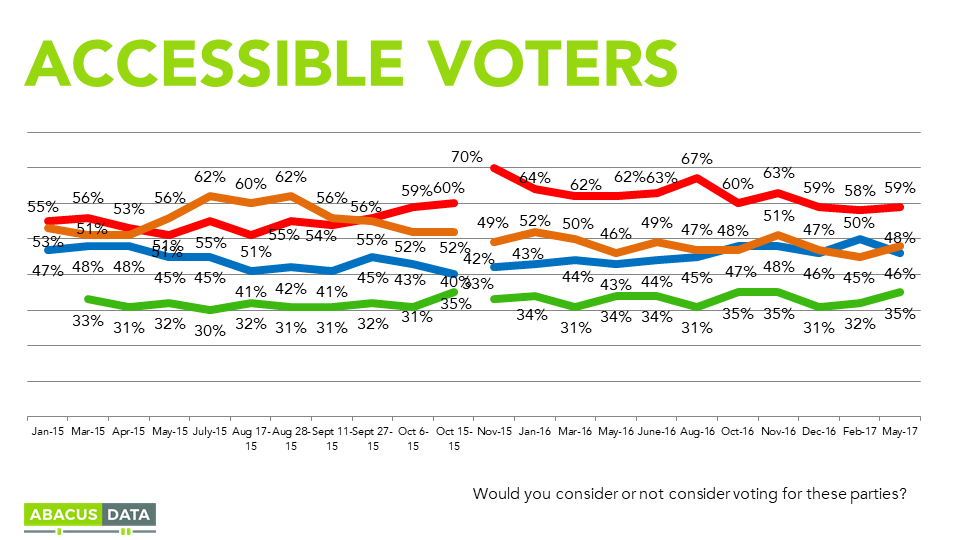
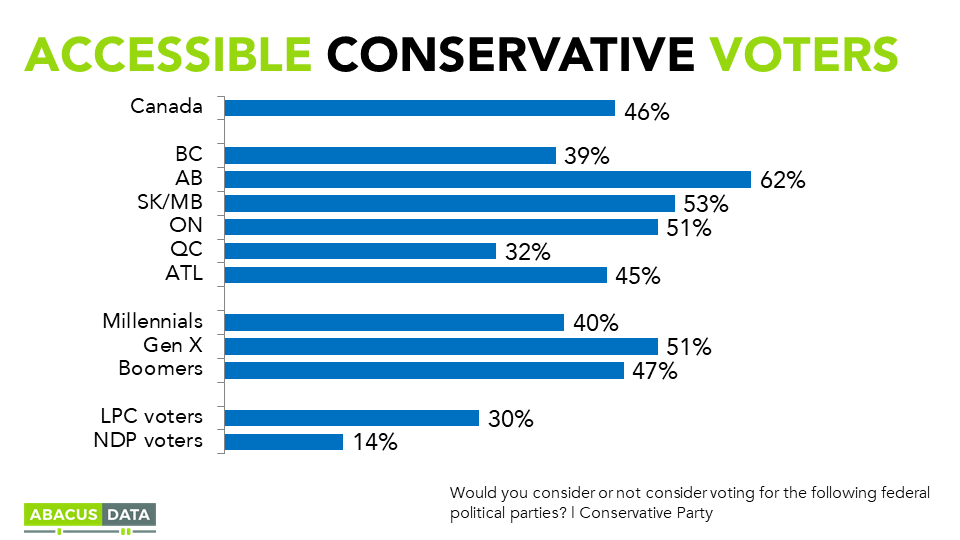

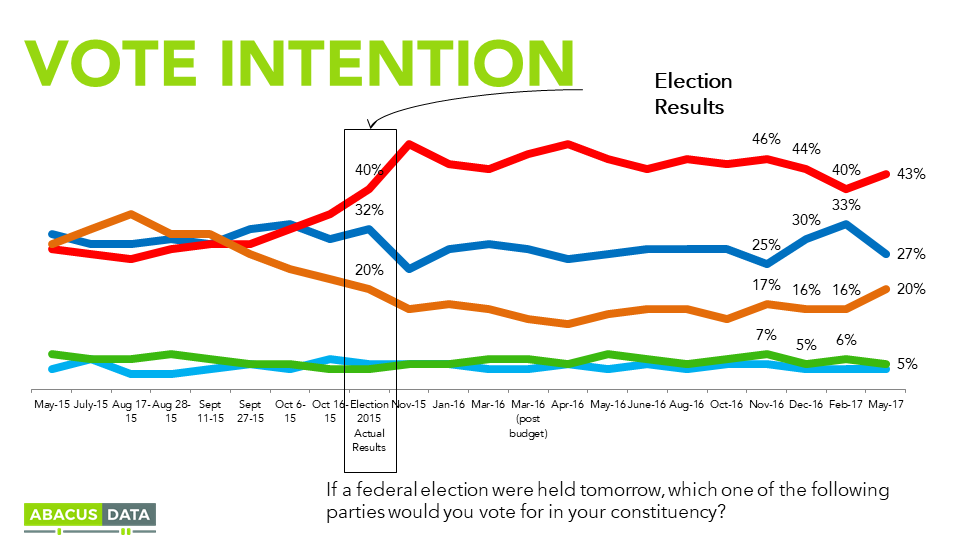
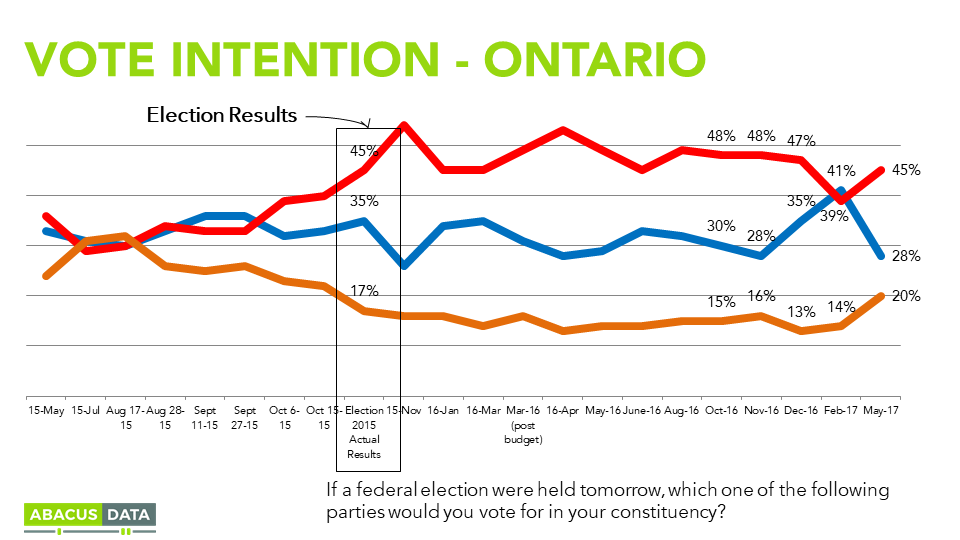
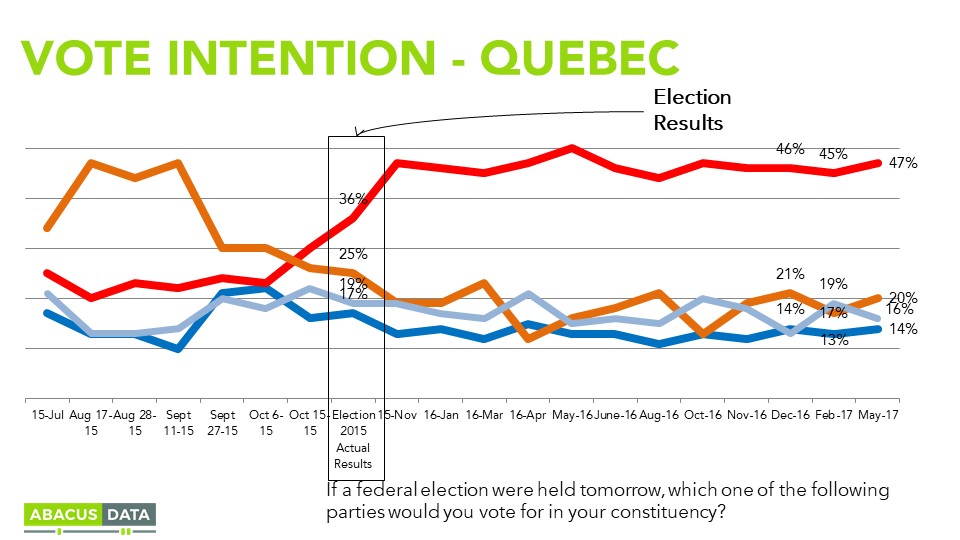
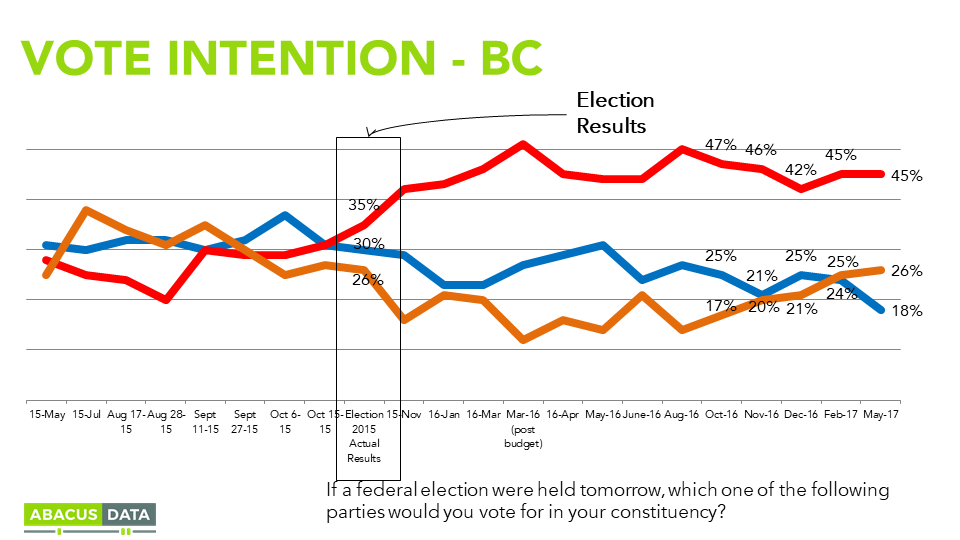

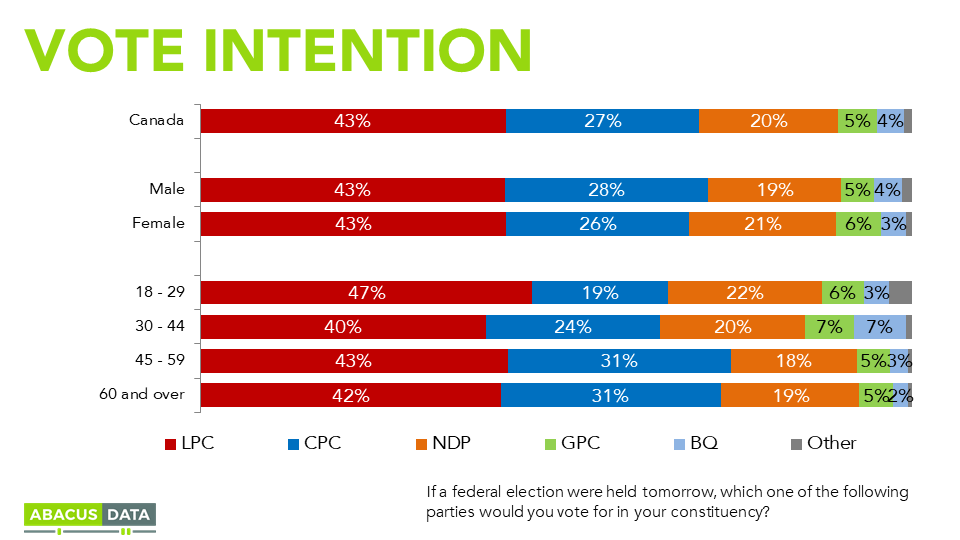
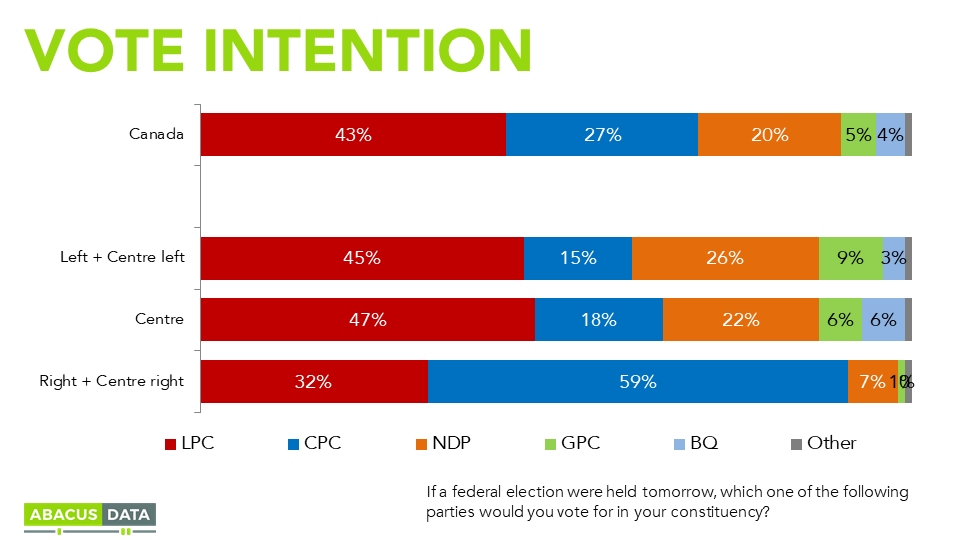
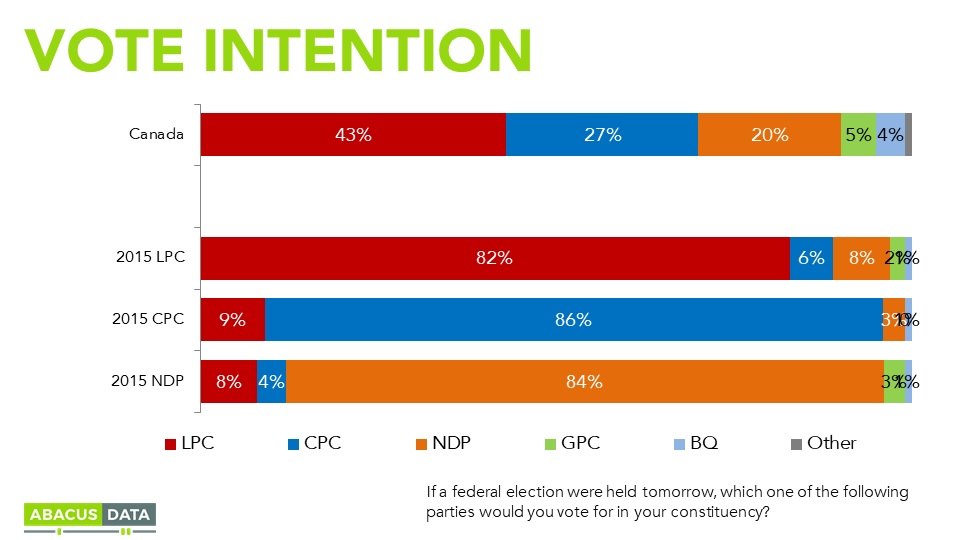
UPSHOT
According to Bruce Anderson: “In the last couple of months, our polling showed some narrowing between the Conservatives and Liberals, mostly in Ontario. But our current numbers show that effect has disappeared, and the latest numbers are more like what we’ve been seeing for months.
Looking back over time provides a clear reminder that things can change – sometimes quickly and dramatically. The gains the Liberals have made can obviously not be taken for granted – voters give support and are always ready to take it away. That having been said, the government has taken policy initiatives that had the potential to cause significant trauma to their support levels – pipeline approvals, budget deficits, carbon pricing, refugee acceptance to name a few – and so far their support levels are holding up fairly well. These findings also underscore again how many issues that have the potential to preoccupy the House and the Hill often fail to capture the attention of most voters whose lives don’t revolve around politics.
As the Conservatives mark their ballots the numbers are another important signal that expanding the base and becoming more competitive among younger voters and non-ideological centrist voters is necessary for success. If Maxime Bernier is the winner of the Conservative race, the big question is whether his brand of conservatism is well suited to that task?
For the NDP, the challenge is perplexing if not the first time they’ve faced it. In a nutshell, they need to be more needed by the left and more relevant to the centre. Otherwise, their best hope will be a repeat of the disappointment of the 2015 election.”
According to David Coletto: “To me, this poll is more sobering and than reassuring to Canada’s two largest opposition parties.
For the Conservatives, its voter pool has rebounded from its lowest point just before the 2015 election. But the hurdles its new leader will face in rebuilding its past electoral coalition or constructing a new one are substantial. Its voter pool is in the 30s in both BC and Quebec (the second and third largest provinces). Only 40% of the soon to be the largest generation in the electorate, Millennials, would consider voting Conservative (5-points less than the Green Party) and the party has been squeezed to third place among the all-important “centrist” voters.
The NDP sits at pretty much the same place it has been for the past 18 months. It’s vote share is unchanged nationally, but is far from leading in any region of the country. While half of the electorate is open to voting NDP, including half of those who voted Liberal in 2015, it trails the Liberals across all demographic groups as well as those who self-identify as being on the left of the political spectrum.
The bottom line for the Conservative Party is that the electorate is shifting in a less Conservative-friendly direction. Millennial voters are becoming more powerful and the party needs to seriously consider how to appeals to this big group of voters. For the NDP, there is potential but the party needs dissatisfaction with Mr. Trudeau and the Liberals among progressive voters to rise while offering them something unique and distinct from the Liberal platform to switch to.”
Listen to our audio briefing about this poll:
METHODOLOGY
Our survey was conducted online with 1,182 Canadians aged 18 and over from May 10 to 12, 2017. A random sample of panelists was invited to complete the survey from a large representative panel of over 500,000 Canadians.
The Marketing Research and Intelligence Association policy limits statements about margins of sampling error for most online surveys. The margin of error for a comparable probability-based random sample of 1,407 is +/- 2.9%, 19 times out of 20.
The data were weighted according to census data to ensure that the sample matched Canada’s population according to age, gender, educational attainment, and region. Totals may not add up to 100 due to rounding.
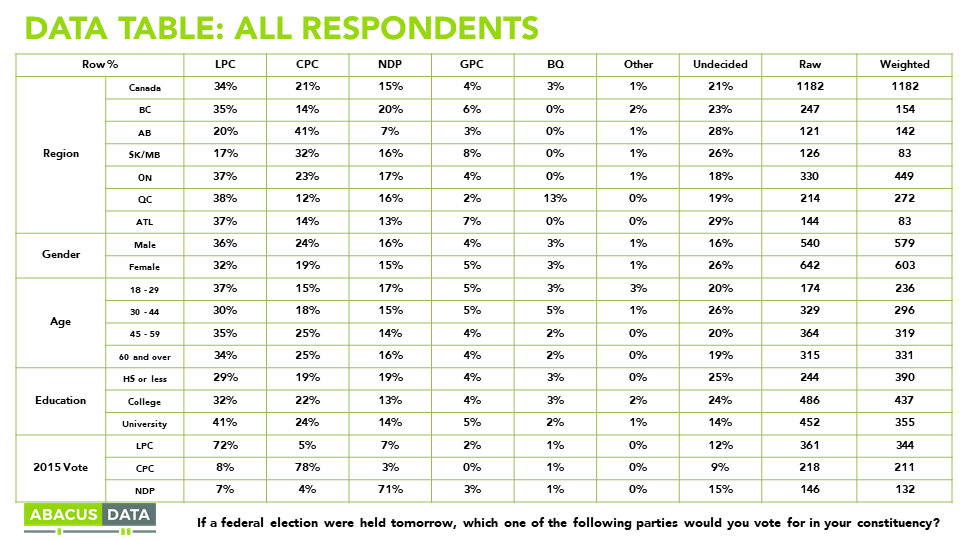
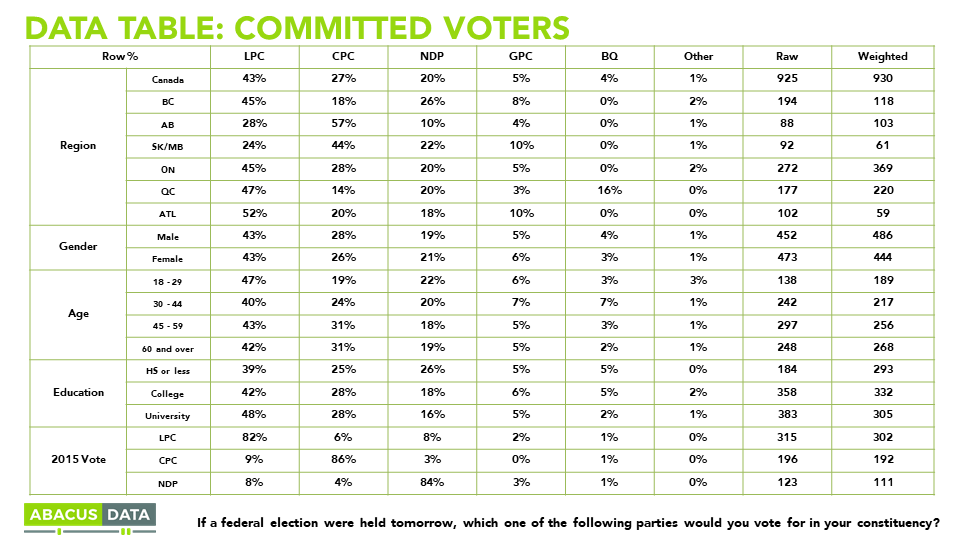
ABACUS DATA INC.
We offer global research capacity with a strong focus on customer service, attention to detail and value-added insight. Our team combines the experience of our Chairman Bruce Anderson, one of Canada’s leading research executives for two decades, with the energy, creativity and research expertise of CEO David Coletto, Ph.D.
